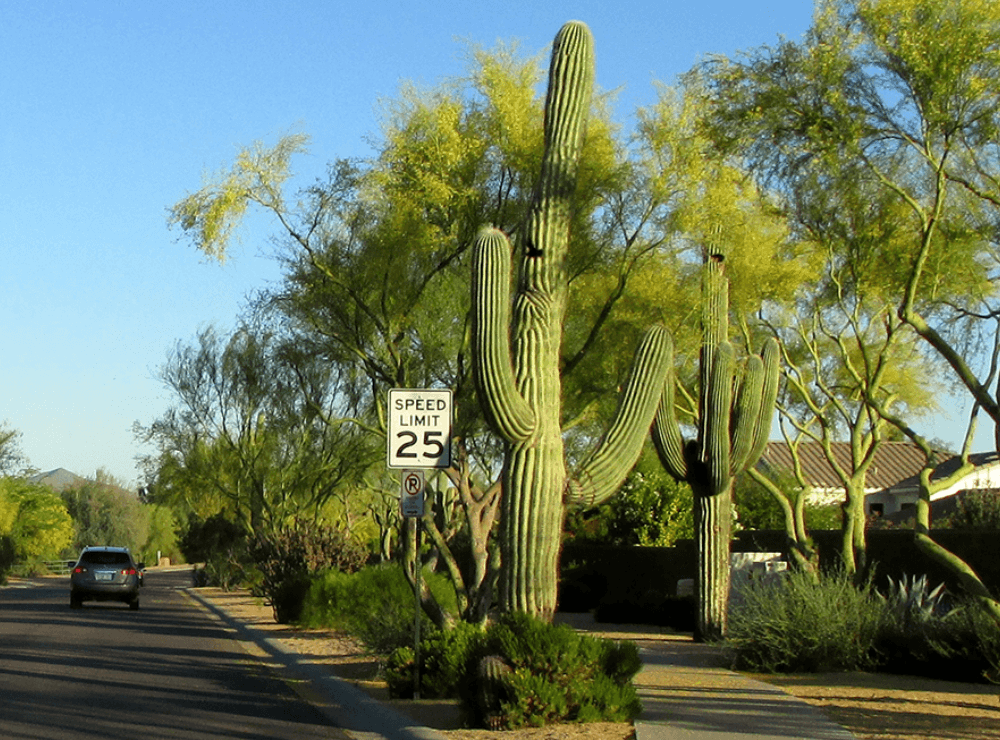AMWUA Blog
BY: Warren TenneyArizona’s Long Legacy of Conservation Benefits us all

We can live in the desert because we understand the significance of water conservation and efficiency as a necessity and not a temporary reaction. Arizona has always been an arid State, and therefore a culture of conservation is our way of life.
Arizona has mandated water conservation for 40 years since the creation of the 1980 Groundwater Management Act (GMA) , which required increasingly stringent water conservation requirements, even though some cities already had their own water efficiency efforts underway well before 1980. The goal of conservation for municipalities under the GMA was and continues to be to decrease per capita water demand and change the way we use water to protect our future water supplies. Since we have been practicing those conservation practices for decades, the importance of wise water use in our arid climate with prolonged drought and limited precipitation is embedded in our daily lives.
 Shortly after the passage of the 1980 Groundwater Management Act, AMWUA formed a Regional Conservation Program to assist its members in developing and implementing conservation programs to comply with the GMA. The educational and outreach materials, messaging, promotions, training, model ordinances, and technical resources developed through the Program became core components of the individual programs each city built to directly assist their residents and businesses.
Shortly after the passage of the 1980 Groundwater Management Act, AMWUA formed a Regional Conservation Program to assist its members in developing and implementing conservation programs to comply with the GMA. The educational and outreach materials, messaging, promotions, training, model ordinances, and technical resources developed through the Program became core components of the individual programs each city built to directly assist their residents and businesses.
The Regional Program, which continues today as AMWUA’s Conservation & Efficiency Program, was created as a collaborative effort of the conservation staffs of the AMWUA municipalities, AMWUA staff, together with regional partners, trade associations, UA Cooperative Extension, Tucson Water, and others to advance water use efficiency and conservation.
From the beginning, reducing landscape water use has been a significant focus. For example, grass is not allowed in irrigated public medians and rights-of-way. Since the early 1980s, only low-water-use plants identified in Low-Water-Use / Drought-Tolerant Regulatory Plant Lists have been allowed in irrigated public medians and rights-of-ways. The Lists were developed through technical advisory committees of industry and conservation professionals. More than 900 plants have been selected for the Lists, based mainly on what plants could survive in our challenging environment with minimal water. In the end, the Lists had a more significant impact than anyone imagined, essentially requiring that every median and right-of-way become a widely seen example of desert-adapted landscaping, setting a new expectation for our landscapes. Las Vegas recently made the news over a proposal to adopt these types of ordinances for rights-of-way and commercial properties, highlighting the forward-thinking of Arizona leaders 40 years ago.
committees of industry and conservation professionals. More than 900 plants have been selected for the Lists, based mainly on what plants could survive in our challenging environment with minimal water. In the end, the Lists had a more significant impact than anyone imagined, essentially requiring that every median and right-of-way become a widely seen example of desert-adapted landscaping, setting a new expectation for our landscapes. Las Vegas recently made the news over a proposal to adopt these types of ordinances for rights-of-way and commercial properties, highlighting the forward-thinking of Arizona leaders 40 years ago.
Today, the AMWUA cities have an extensive mix of ordinances to reduce landscape water use by limiting grass, requiring low-water-use landscapes, requiring conservation plans for new buildings and landscapes, prohibiting water waste, and limiting water features. Each municipality considers various factors in deciding which ordinances best serve their customers and best assisting with the management of their water resources.
Looking back, AMWUA's Regional Program provided a foundation and a forum for information exchange that allowed the AMWUA members to build their individual programs more efficiently and  effectively. The AMWUA cities now have programs uniquely tailored to their residents and businesses, and all have professionals to assist them. They also collectively implement more than 300 Best Management Practices, including public awareness initiatives, educational opportunities, and training for homeowners, students, teachers, landscape professionals; rebates and incentives; and direct assistance and outreach. In other words, the cities have moved beyond simply complying with State requirements and now implement water conservation and efficiency programs that are a critical component of their long-term planning and to meet their own long-term water management goals.
effectively. The AMWUA cities now have programs uniquely tailored to their residents and businesses, and all have professionals to assist them. They also collectively implement more than 300 Best Management Practices, including public awareness initiatives, educational opportunities, and training for homeowners, students, teachers, landscape professionals; rebates and incentives; and direct assistance and outreach. In other words, the cities have moved beyond simply complying with State requirements and now implement water conservation and efficiency programs that are a critical component of their long-term planning and to meet their own long-term water management goals.
For decades, water conservation has played a part in protecting all water sources here in Arizona - not just in response to a possible shortage of one source of supply. Meaning we all benefit because leaders made tough decisions early on by instilling a conservation ethic by recognizing the importance of water conservation measures. Those efforts have enabled us to collectively reduce per capita water use, meet growth demands with existing supplies, and protect water for future use – all without the need to impose water restrictions. So yes, conservation matters, like it did 40 years ago, and it does make a difference.
Learn more about what you can do because being responsible with the water we have is up to each of us.
For over 50 years, Arizona Municipal Water Users Association has worked to protect our member cities' ability to provide assured, safe, and sustainable water supplies to their communities. For more water information, visit www.amwua.org .
Stay up to date & sign up for the AMWUA Blog:
Sign Up Now For Email Marketing you can trust.
